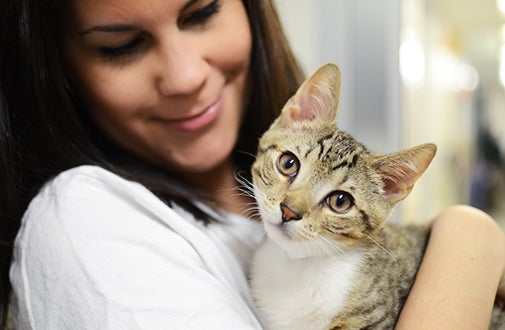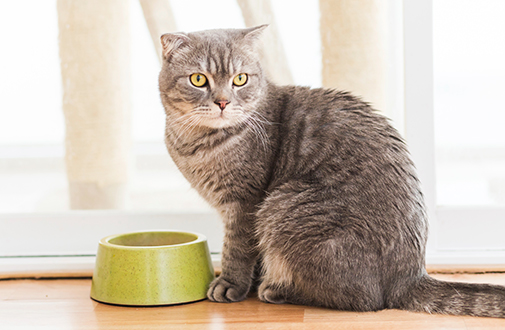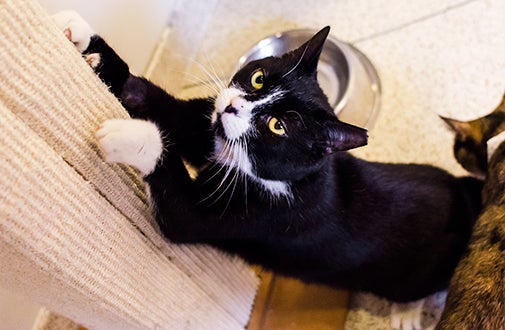Secret Tips For General Cat Care
Have you recently added a feline friend to your family? Congratulations! We know you’ll be thrilled to have your new cat in your home. If you are considering adopting a cat, please visit your local shelter. We encourage you to browse our directory of adoptable cats in your area, or use our shelter finder to start your search.
Read on for useful tips for new cat parents, and for those looking to brush up on their pet care skills.
Read on for useful tips for new cat parents, and for those looking to brush up on their pet care skills.
Basic Care
Feeding
We prescribe acquiring excellent, mark name cat or feline sustenance. Your veterinarian will have the capacity to evaluate your new feline or little cat and decide the best eating routine. Factors, for example, age, action level and wellbeing have any kind of effect in what and how much a feline ought to eat.
Felines require taurine, a fundamental amino corrosive, for heart and eye wellbeing. The sustenance you pick ought to be adjusted for the life phase of your feline or cat. Appropriately adjusted sustenances will contain taurine.
You should give crisp, clean water constantly, and wash and refill your feline's water bowls every day.
Treats ought to be close to 5-10% of the eating regimen.
Many individuals nourish child sustenance to a feline or cat who is rejecting nourishment or not feeling great Please read marks precisely: If the infant nourishment contains onion or garlic powder, your pet could be harmed.
Take your pet to your veterinarian if indications of anorexia, looseness of the bowels, regurgitating or torpidity proceed for over two days.
It would be ideal if you visit our People Foods to Avoid Feeding Your Pets page for a rundown of forbidden things, and also our Cat Nutrition Tips page for more data.
Grooming
Most cats stay relatively clean and rarely need a bath, but you should brush or comb your cat regularly. Frequent brushing helps keep your cat's coat clean, reduces the amount of shedding and cuts down on the incidence of hairballs. Please visit our Cat Grooming Tips page for more information.
Handling
To pick up your cat, place one hand behind the front legs and another under the hindquarters. Lift gently. Never pick up a cat by the scruff of the neck or by the front legs.
Housing
Your pet ought to have her own particular perfect, dry place in your home to rest and rest. Line your feline's bed with a delicate, warm cover or towel. Make sure to wash the bedding regularly. It would be ideal if you keep your feline inside. Open air felines don't live as long as indoor felines. Outside felines are in danger of injury from autos, or from battles with different felines, raccoons and free-meandering mutts. Coyotes are known to eat felines. Open air felines will probably move toward becoming swarmed with insects or ticks, and in addition contract irresistible sicknesses.
Identification
If allowed outdoors, your cat must wear a safety collar and an ID tag. A safety collar with an elastic panel will allow your cat to break loose if the collar gets caught on something. And for both indoor and outdoor cats, an ID tag or an implanted microchip can help ensure that your cat is returned if he or she becomes lost.
Litter Box
Every indoor feline need a litter box, which ought to be set in a calm, open area. In a multi-level home, one box for each floor is suggested. Abstain from moving the case unless totally important, however in the event that you should do as such, move the container only a couple of inches every day. Remember that felines won't utilize an untidy, rotten litter box, so scoop strong squanders out of the crate in any event once per day. Dump everything, wash with a mellow cleanser and refill in any event once per week; you can do this less habitually if utilizing bunching litter. Try not to utilize smelling salts, antiperspirants or aromas, particularly lemon, when cleaning the litter box. In the event that your feline won't utilize a litterbox, please counsel with your veterinarian. At times refusal to utilize a litter box depends on a restorative condition that required treatment. It would be ideal if you visit our Litter Box Problems page for more data.
Scratching
Cats need to scratch! When a cat scratches, the old outer nail sheath is pulled off and the sharp, smooth claws underneath are exposed. Cutting your cat’s nails every two to three weeks will keep them relatively blunt and less likely to harm the arms of both humans and furniture. Provide your cat with a sturdy scratching post, at least three feet high. The post should also be stable enough that it won't wobble during use, and should be covered with rough material such as sisal, burlap or tree bark. Many cats also like scratching pads.
Health
Your cat should see the veterinarian at least once a year for an examination and annual shots, and immediately if she is sick or injured.













No comments